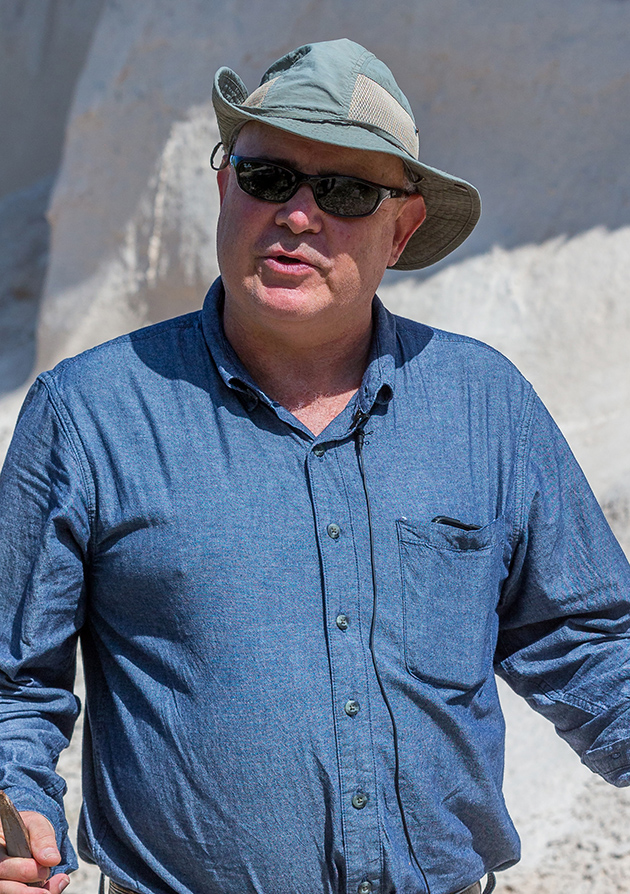
(UTRGV Archival Photo by David Pike)
News Release | Research

(UTRGV Archival Photo by David Pike)
Wednesday, September 9, 2020
Faculty Focus, Research
By Victoria Brito

RIO GRANDE VALLEY, TEXAS – Dr. Juan L. González, associate professor in UTRGV School of Earth and Environmental Sciences (SEEMS), is part of a research team that examines the longevity of coastal wetlands on the Mississippi Delta.
The research, titled “Tipping points of Mississippi Delta marshes due to accelerated sea-level rise” was published in Science Advances, a high-impact journal of the American Association for the Advancement of Sciences. Other members of the research team include:
Coastal wetlands are important to society because they provide benefits such as storm surge protection, enhance water quality by removing excess nutrients and provide habitat for marine and terrestrial species. As a result, their subsistence is of great concern to society, particularly in the context of climate-driven accelerated sea level rise.
“Our study area is coastal Louisiana, but we argue that we can extend our findings to other wetlands around the world,” González said. “There are coastal marshes in the Mediterranean and South East Asia that we predict will also be impacted by fast rates of sea level rise.”
ABOUT THE STUDY
The team studied hundreds of sediment cores from the Mississippi Delta that showed changes in wetland response to changing rates of sea level rise, dating back more than 7,000 years.
“We basically look at a very large dataset of sediment cores and radiocarbon ages from the Mississippi Delta,” González said. “This allowed us to infer, for any one time in the past 7,000 years, how fast sea level was rising. And by looking at the different sediment layers in the cores, we could see whether the marshes were drowning or keeping up with sea level rise.”
González said this study differs from past studies in that it looks at a long-term record, rather than short-term. Recent studies claim coastal wetlands can adapt to a rate of rise in sea level as high as 10 millimeters per year. However, our findings show coastal wetlands actually are more vulnerable than hypothesized and already have crossed the threshold of survival.
The main finding of the study is that, once a rate of sea level rise of about 3 millimeters per year is exceeded, widespread marsh drowning occurs within a few centuries. And when rates increase to 6 to 9 millimeters per year, a likely scenario later this century due to the current sea-level acceleration is that drowning will occur in about 50 years.
“Most concerning is that the present-day rate of global sea level rise already exceeds the 3 millimeters per year threshold,” he said, “and drowning of the remaining marshland in coastal Louisiana seems unavoidable.”
Read more about this study:
ABOUT UTRGV
The University of Texas Rio Grande Valley (UTRGV) was created by the Texas Legislature in 2013 as the first major public university of the 21st century in Texas. This transformative initiative provided the opportunity to expand educational opportunities in the Rio Grande Valley, including a new School of Medicine and a School of Podiatry, and made it possible for residents of the region to benefit from the Permanent University Fund – a public endowment contributing support to the University of Texas System and other institutions.
UTRGV has campuses and off-campus research and teaching sites throughout the Rio Grande Valley including Brownsville (formerly The University of Texas at Brownsville campus), Edinburg (formerly The University of Texas-Pan American campus), Harlingen, Weslaco, McAllen, Port Isabel, Rio Grande City and South Padre Island. UTRGV, a comprehensive academic institution, enrolled its first class in the fall of 2015; the School of Medicine welcomed its first class in the summer of 2016, and the School of Podiatric Medicine in the fall of 2022.